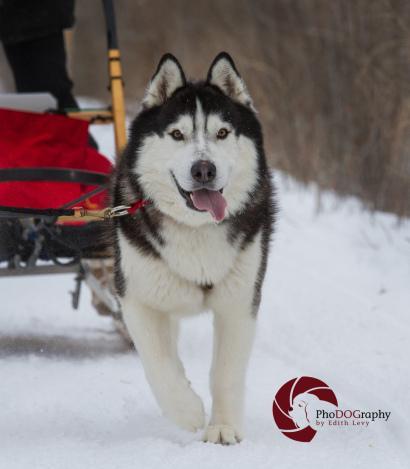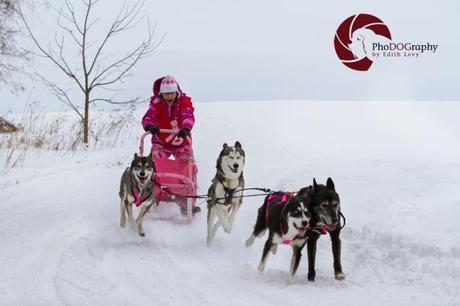With all the images I’ve been posting this week of the Cannington Dog Sled Race ( you can see them here and here) I’ve also received quite a few questions and comments about what I was wearing that day to stay warm and dry. Good questions and if you haven’t spent hours outdoors shooting in -12C (that was the temperature that day) but you’re thinking about it then grab a hot cuppa java and read on.
Now let me start by being completely honest. I don’t like the cold! I’m not a huge fan of winter. I do like a fresh snowfall, it’s very pretty. I like a white Christmas but by the second week of January I’ve generally had it. As a matter of fact as I write this I’m dreaming of white sandy beach with turquoise waters somewhere far away….
Sorry I digress, back to preparing for a winter shoot. The following are tips that will ensure a successful photography outing as well as keeping safe, warm and dry.
- Charge up your batteries the day before. The cold weather will drain your batteries quicker then normal so make sure you have a back up with you.
- Dress in layers. Knowing that the forecast for the day was going to be about -12C I knew that I would need a few layers to keep me warm and dry. Use a base layer (top and bottom), which essentially acts as your second skin. It should be made from a wicking material such as merino wool that will pull sweat away from your body but provide a layer of warmth. Do not wear a cotton base layer. When you sweat (and chances are you will even if your bundled up because your going to be trekking) the cotton will absorb the sweat but it will stay wet and you will be cold.
- Wear a pair of ski/snow pants over your base layer. Make sure your snow pants are waterproof and that they have reinforced cuffs and boot gators. This will prevent snow from getting inside your boots.
- On top, over the base layer, I wore a fleece pullover and a ski jacket with a hood. Believe me the hood comes in handy if it’s really windy and the snow is blowing.
- This goes without saying but wear a hat. If your head isn’t insulated the bodies core temperatures drops more rapidly but despite scientific findings believe you’ll be happier with a warm head and ears.
- Gloves! My hands were my biggest concern. If my fingers get too cold not only can I not shot for long periods but depending on how cold it gets you can risk frostbite. At the beginning of this winter, knowing that I was going to be shooting outdoors with animals I purchased a pair of gloves for photographers with the tips of the forefinger and thumb that bend backwards allowing you to be able to manage your cameras’ controls. I wore them for a shot in December when the temperature wasn’t below zero and my hands were freezing. They just didn’t work for me. What I did for my day shooting the dog sled races is I purchased a pair of thin merino wool liner gloves. I wore these as a base layer under a pair of ski gloves. While walking from place to place I wore both gloves. While shooting I removed the ski glove from my right hand and with the liner on I was able to manage my cameras controls easily. NOW HERE’S YOUR TIP OF THE DAY…. Get your self some disposable hand warms and keep them in your jacket pocket. While waiting for the next dog sled to come around I would put my hand in my pocket and it warm up my right hand. This way I didn’t have to keep taking the ski glove off and put it on and potentially. Issuing a shot.
- Make sure your boots are warm and waterproof. You could be standing in one place for a couple of hours so you want to make sure your toes stay warm.
- Taking care with your camera is just as important in these types of conditions. If you’ve been outdoors and need to head inside for a coffee or a bathroom break then put your camera away in your camera bag and leave it in the car if that’s possible. If your car isn’t close by then pack your camera in you bag before going inside. If you wear glasses you know that when you come in from the cold your glasses will fog up immediately when you come in from the cold. The same thing will happen to your camera and lens. The condensation can cause some real damage to your camera so you need to let it acclimatize to the difference in temperature. Once I got home I waited a coupe of hours before unzipping my camera bag.
I hope this helps and gives you some good guidelines to help you plan for a day shooting out in the cold and snow.
Have a great weekend.

